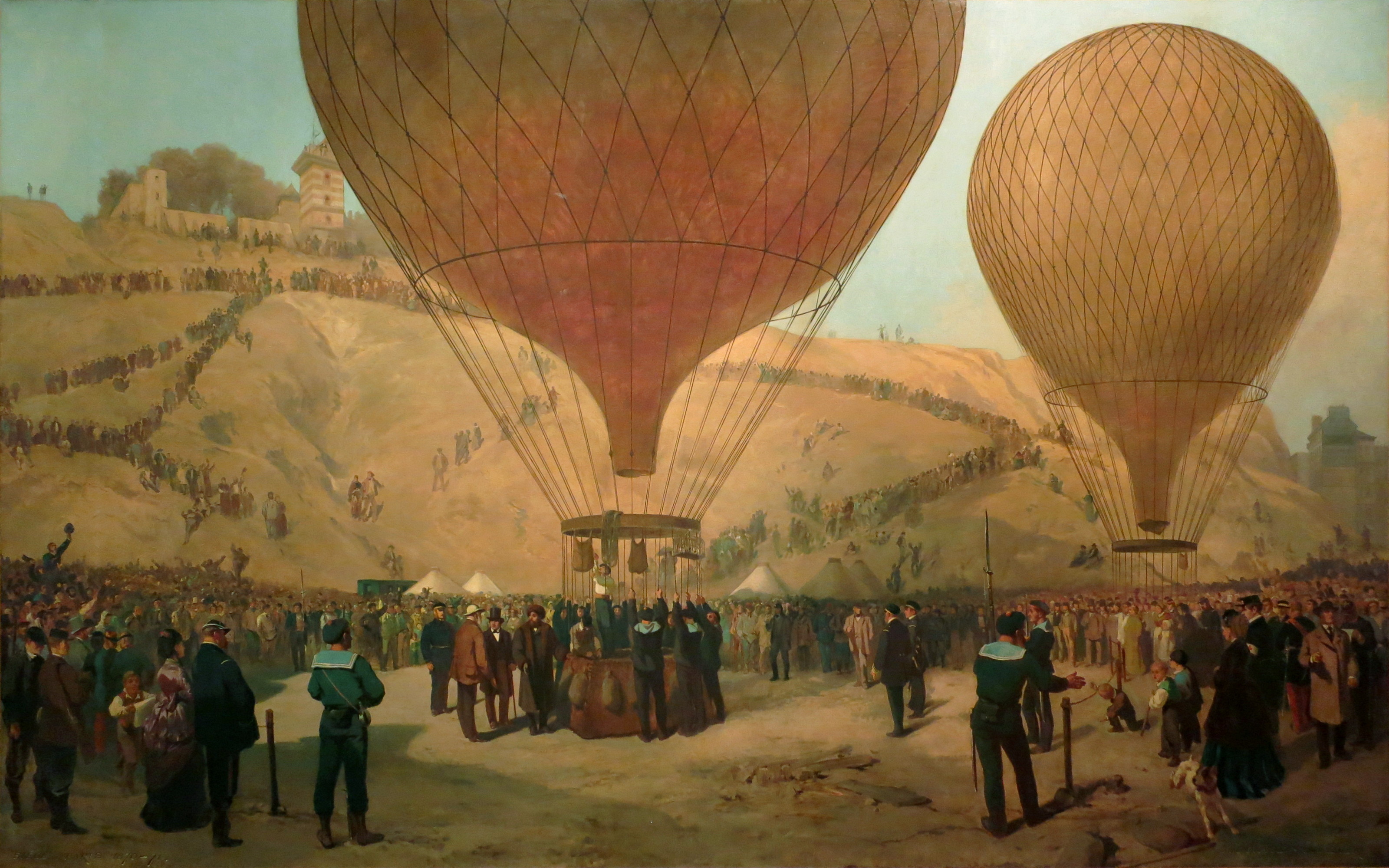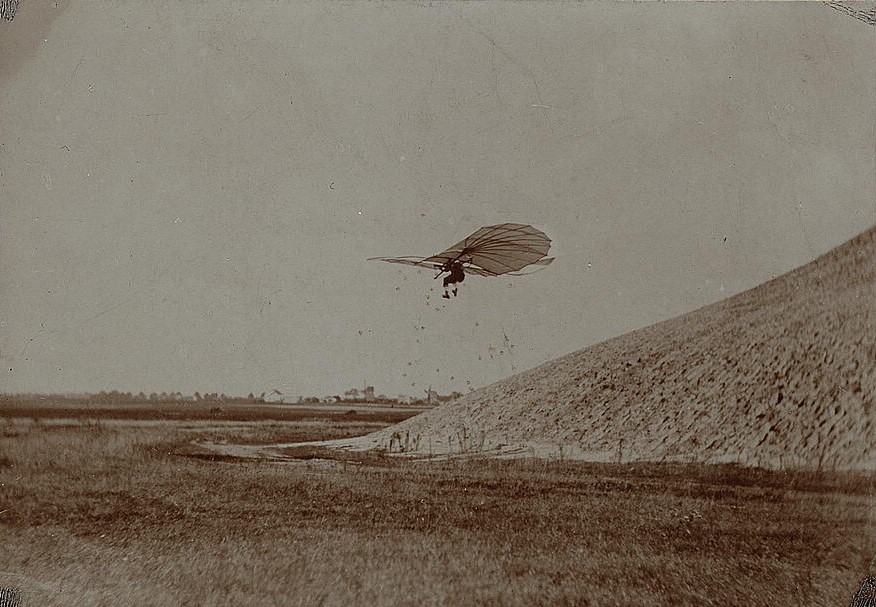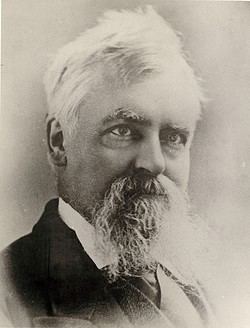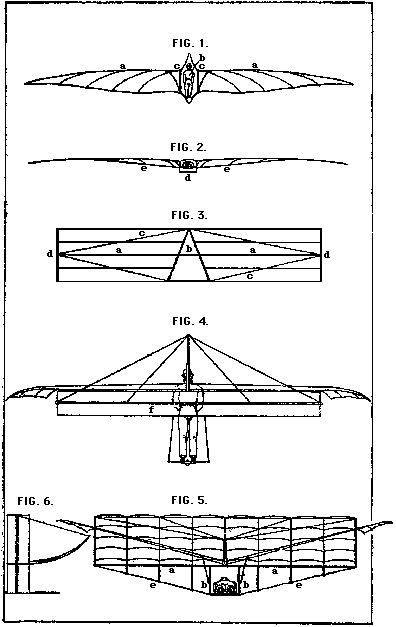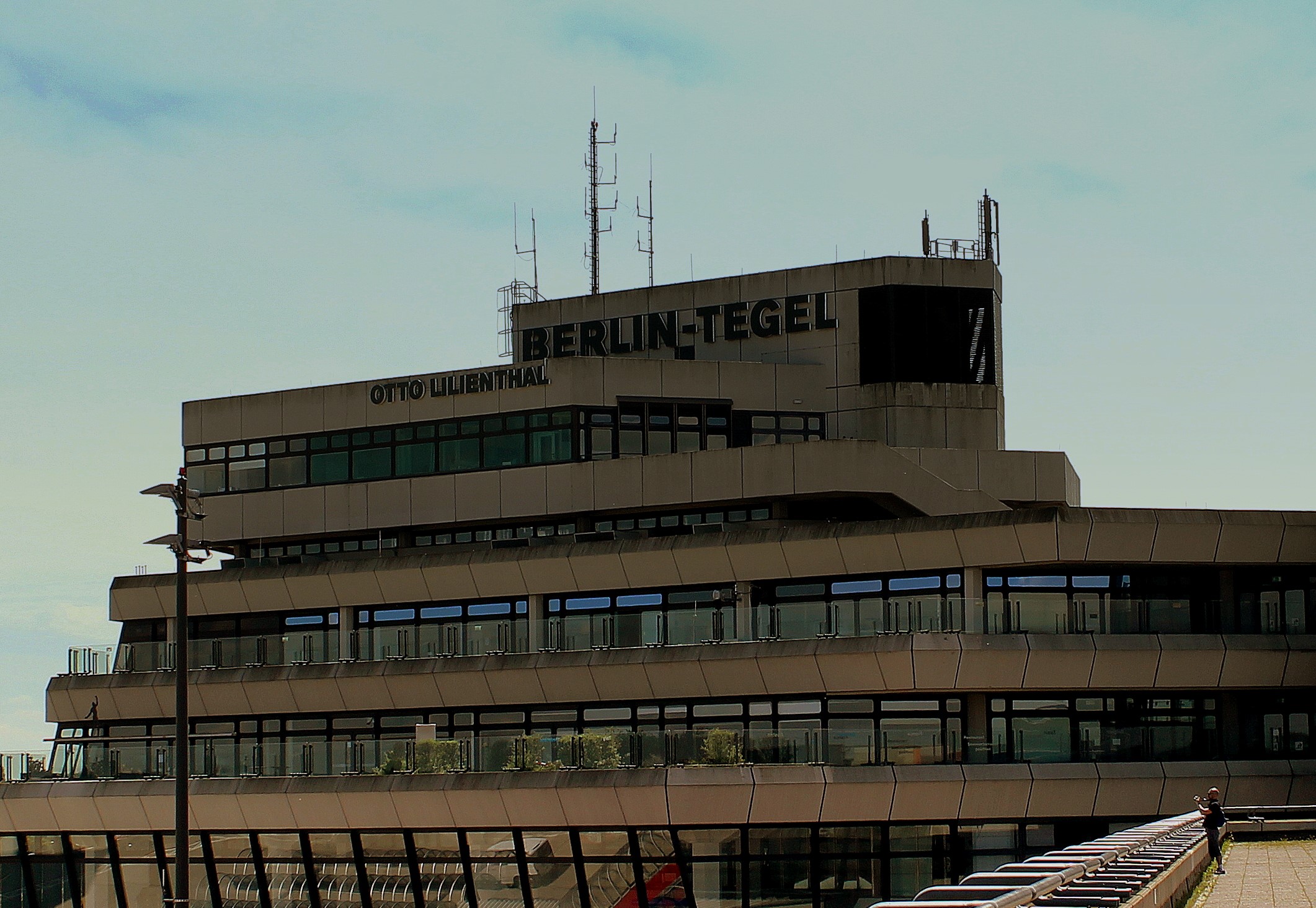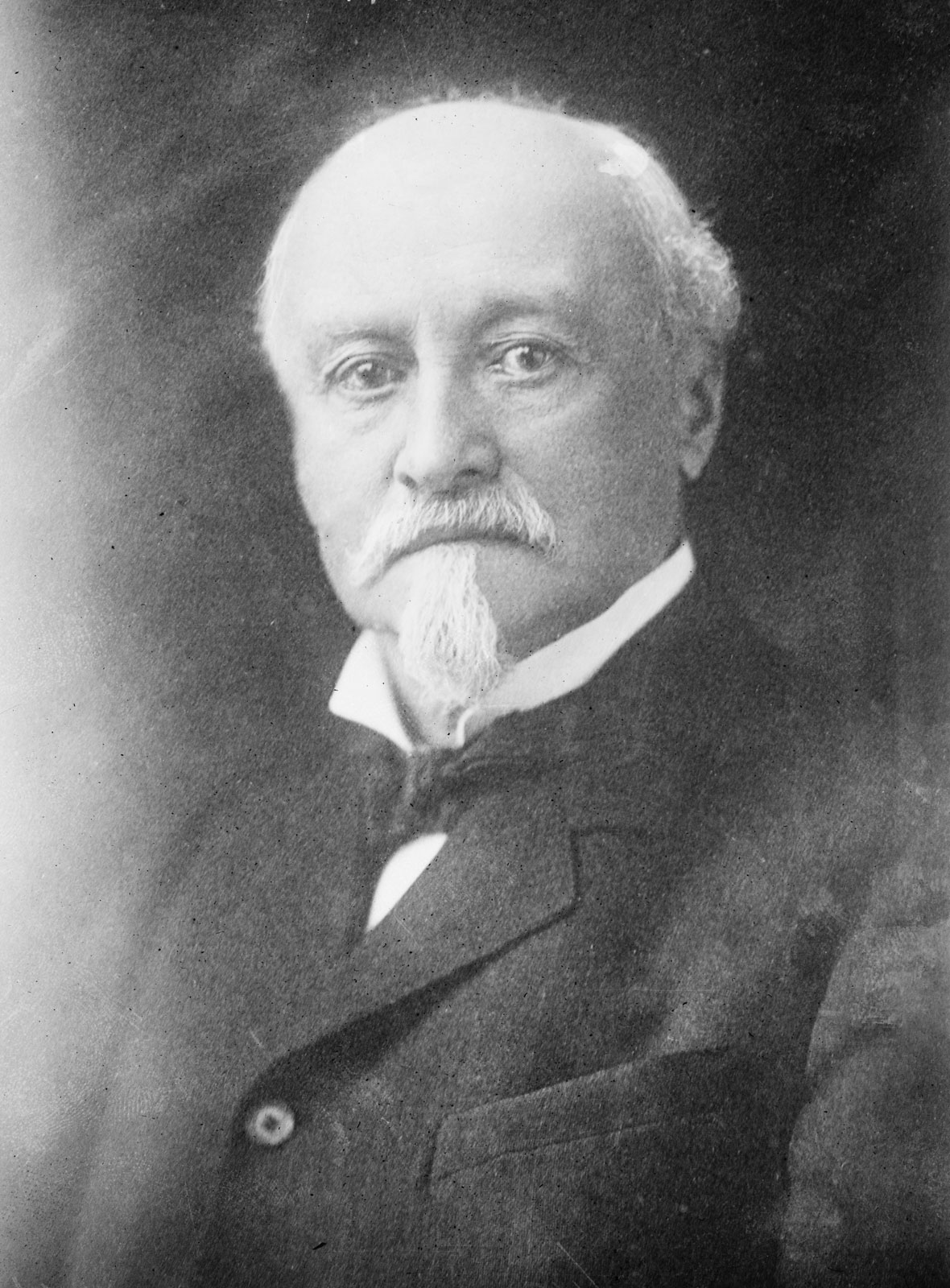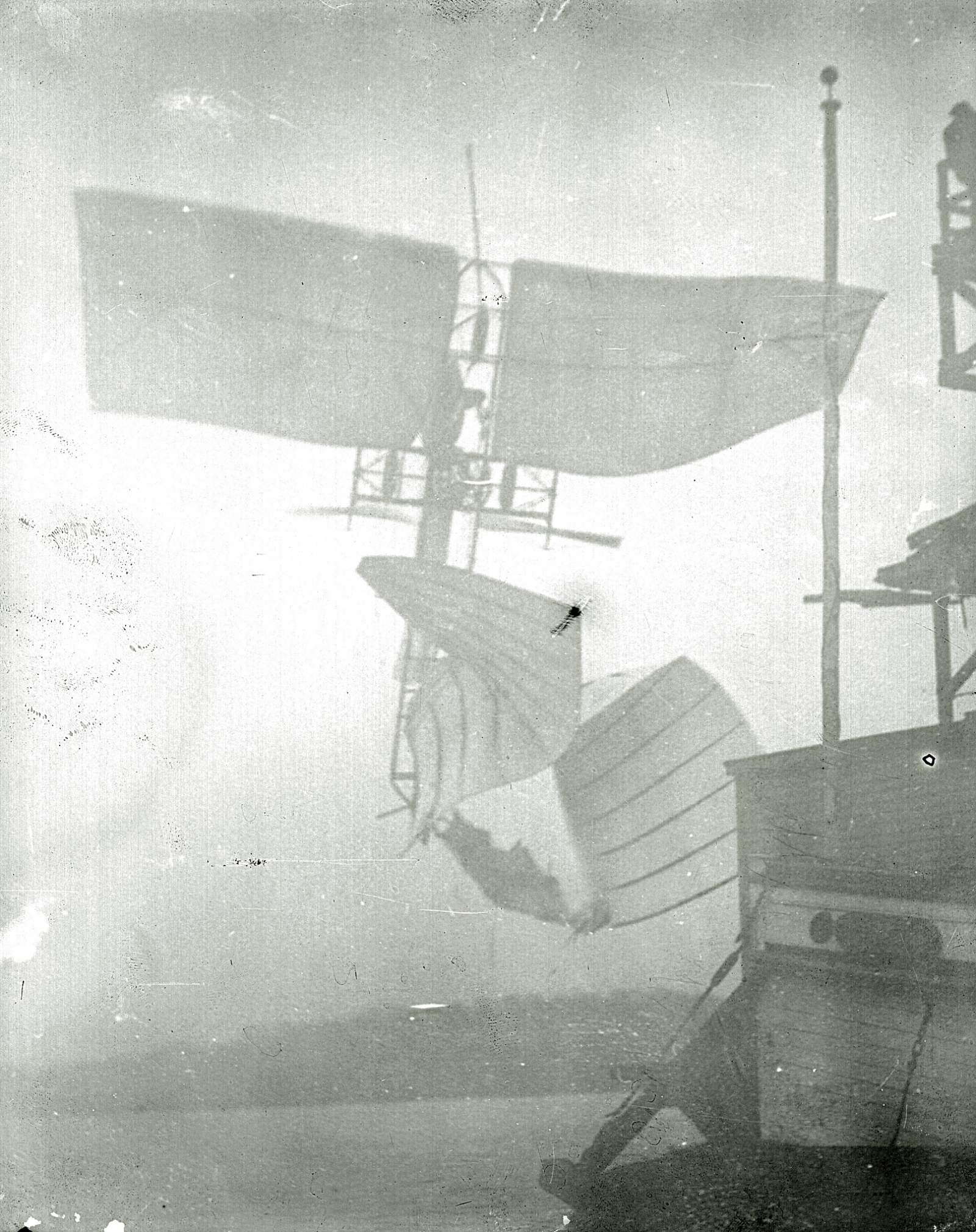Further Developments in Aviation During the 19th Century
Beginnings
4 October 2020
The 19th century was a busy time for aviation. Balloons and lighter-than-air aircraft continued to develop following their creation in the 18th century, resulting in longer and higher flights.
In November 1836, a new record for distance and duration in flight was set when a balloon was flown from England to Germany over eighteen hours. The first hypoxia deaths occurred then in 1875, when the balloon Zenith ascended to over 28,000 feet. Two out of three passengers died, and the remaining man was left deaf.
While killing some, balloons ended up saving the lives of many. In 1870, Paris was under siege during the Franco-Prussian War. Completely surrounded, the Parisians had no way of escaping or communicating with the outside world without facing almost certain death. Thankfully, they had balloons, which they used to airlift people and mail out of Paris.
Balloons aside, the most important achievements of the 19th century involved gliders and heavier-than-air aircraft. These developments would ultimately lead to the airplane we know today.
1. The passengers of The Zenith after landing. Image via Library of Congress. 2. Balloons departing during the Siege of Paris. Artwork by Jules Didier and Jacques Guiaud.
1. Otto Lilienthal in flight. Image via Library of Congress. 2. Portrait of William Samuel Henson. Public Domain. 3. Portrait of Francis Herbert Wenham. Public Domain. 4. Some of Wenham's glider designs, published in his own On Aerial Locomotion. 5. Otto Lilienthal's name on Berlin Tegel Airport. Photo by calflier001 on flickr. Image cropped for clarity. CC BY-SA 2.0
It starts with a man named William Samuel Henson, who followed George Cayley in his studies of gliders. In 1843 he was able to patent a steam engine driven monoplane, but did not get the chance to fly it, as his work was unfortunately cut short due to a lack of money.
Later, in 1866, Francis Herbert Wenham studied wing shapes and aerodynamics and became the first lecturer to the Royal Aeronautical Society which had recently been formed. With John Browning, he created the first wind tunnel, which enabled further scientific research in aerodynamics.
Several other engineers attempted to create gliders and powered aircraft, with varying degrees of success. One of the most notable of these contributors was Otto Lilienthal. Lilienthal began his work by researching aerodynamics, particularly those of birds. His results were published in Birdflight as the Basis of Aviation in 1889. His main contributions however, were in the form of gliders, which he flew multiple times with great success. His work was directly helpful to the Wright brothers. His legacy is honored today with his name displayed on the side of Berlin-Tegel Airport.
Next, we see a man who dedicated much of his life to furthering flight. Octave Chanute built gliders himself, but is known for taking a philanthropic approach to aviation. He acted as a fact-checker in aviation, discerning false claims from real ones. In addition, he was able to see potential in some engineers and donated to those in need. In 1894, Chanute published a comprehensive review of flight, Progress in Flying Machines, in which he acknowledges those who studied flight and those who tried building aircraft. When the Wright brothers were experimenting with flight, Octave Chanute was instrumental in counseling them and helping them to succeed.
As the Wright brothers were progressing towards flight, they had a lesser known competitor - Samuel Langley. He was also trying to fly a powered airplane, and came awfully close to doing so, even before the Wright brothers were able to. His design may have been feasible, save for the fatal flaw that he was catapulting them into the air - it caused too much stress on the structure of the aircraft and ultimately led to failure. Samuel Langley gave up on aviation just nine days before the Wright brothers made their historic flight in Kitty Hawk.
The 19th century was full of successes and failures in the field of aviation. Lighter-than-air aircraft saw improvements in flight duration and distance. Building off the work of George Cayley, a plethora of scientists and engineers worked independently and sometimes collaboratively to build, test, and improve heavier than air gliders and model airplanes. The work of these gifted people both directly and indirectly influenced the success of the Wright brothers.
1. Portrait of Octave Chanute. 2. Portrait of Samuel Langley. 3. Samuel Langley's destroyed aircraft. Image via Smithsonian Institute.
References
- Baxter, William E. "Samuel P. Langley: Aviation Pioneer." Smithsonian Libraries. Accessed October 5, 2020. https://www.sil.si.edu/ondisplay/langley/intro.htm.
- "Chanute, Octave." National Aviation Hall of Fame, June 29, 2016. https://www.nationalaviation.org/our-enshrinees/chanute-octave/.
- Chanute, Octave. Progress in Flying Machines. United States: Dover Publications, 1997.
- Crouch, Tom D. "Otto Lilienthal." Encyclopædia Britannica. Encyclopædia Britannica, inc., August 6, 2020. https://www.britannica.com/biography/Otto-Lilienthal.
- "Doers and Dreamers: Francis Herbert Wenham." wright-brothers.org. Accessed October 5, 2020. http://www.wright-brothers.org/History_Wing/History_of_the_Airplane/Doers_and_Dreamers/Doers_and_Dreamers_W.htm.
- Gierke, C. David. "The Man Who Almost Beat the Wrights Into the Air." Aviation History, July 1998.
- Launius, Roger D. "Octave Chanute, The Chicago Connection, and the Birth of Aviation." Northern Illinois University. Accessed October 5, 2020. https://www.lib.niu.edu/2001/iht810114.html.
- "Letter Flown out of Paris Siege by Balloon Found in Australia." BBC News. BBC, February 16, 2016. https://www.bbc.com/news/world-australia-35583853.
- Lienhard, John H. "Octave Chanute." Engines of Our Ingenuity. University of Houston. Accessed October 5, 2020. https://www.uh.edu/engines/epi2702.htm.
- Lienhard, John H. "The Siege of Paris." Engines of Our Ingenuity. University of Houston. Accessed October 5, 2020. https://www.uh.edu/engines/epi1132.htm.
- Lilienthal, Otto. Birdflight as the Basis of Aviation. Translated by A. W Isenthal. London: Longmans, Green and Co., 1911.
- "Octave Chanute and His Photos Of the Wright Experiments at the Kill Devil Hills." Library of Congress, February 19, 1999. https://memory.loc.gov/master/ipo/qcdata/qcdata/wrightold/wb005.html.
- "Octave Chanute." Mississippi State University. Accessed October 5, 2020. https://invention.psychology.msstate.edu/inventors/i/Chanute/Chanute.html.
- "Otto Lilienthal." Lemelson-MIT Program. Accessed October 5, 2020. https://lemelson.mit.edu/resources/otto-lilienthal .
- "Samuel P. Langley (1834–1906)." High Altitude Observatory, National Center for Atmospheric Research. Accessed October 5, 2020. https://www2.hao.ucar.edu/Education/FamousSolarPhysicists/samuel-p-langley.
- "Samuel Pierpont Langley." Mississippi State University. Accessed October 5, 2020. https://invention.psychology.msstate.edu/inventors/i/Langley/Langley.html.
- Tissandier, Gaston. "In a Balloon! During the Siege of Paris: Memories of an Aeronaut." Translated by Matthew Loving. 1870. https://www.historynet.com/bullets-and-balloons-escape-from-the-siege-of-paris-1870.htm.
- Turnor, Christopher Hatton. Astra Castra: Experiments and Adventures in the Atmosphere. United Kingdom: Chapman and Hall, 1865.
- View of Journalist Joseph Crocé-Spinelli, Naval Officer Henri Sivel, and Gaston Tissandier in the Basket of the Balloon, "Zénith," after Losing Consciousness Due to Lack of Oxygen after Reaching an Altitude of Nearly 28,000 Ft., near Paris, France, April, 1875. Photograph. Washington, D.C, 1875. Library of Congress. https://www.loc.gov/pictures/collection/tisc/item/2002724811/.
- Wenham, Francis H. "On Aerial Locomotion and the Laws by Which Heavy Bodies Impelled through Air Are Sustained," 1866.
- Werthner, William. Aero Club of America Bulletin, July. 1912. Manuscript/Mixed Material. https://www.loc.gov/item/wright003306/.
- "William Samuel Henson." Royal Aeronautical Society. Accessed October 5, 2020. https://aerosocietyheritage.com/biographies/william-samuel-henson.

